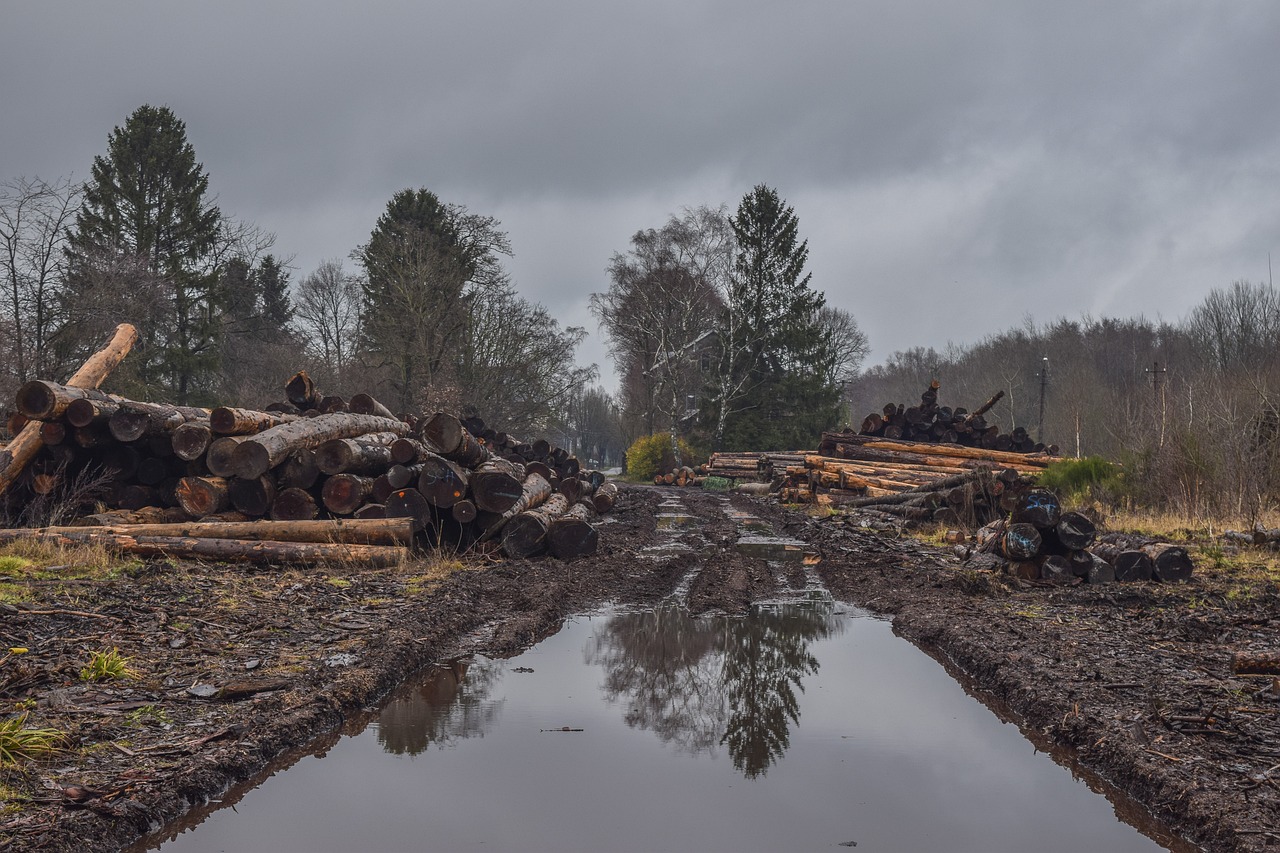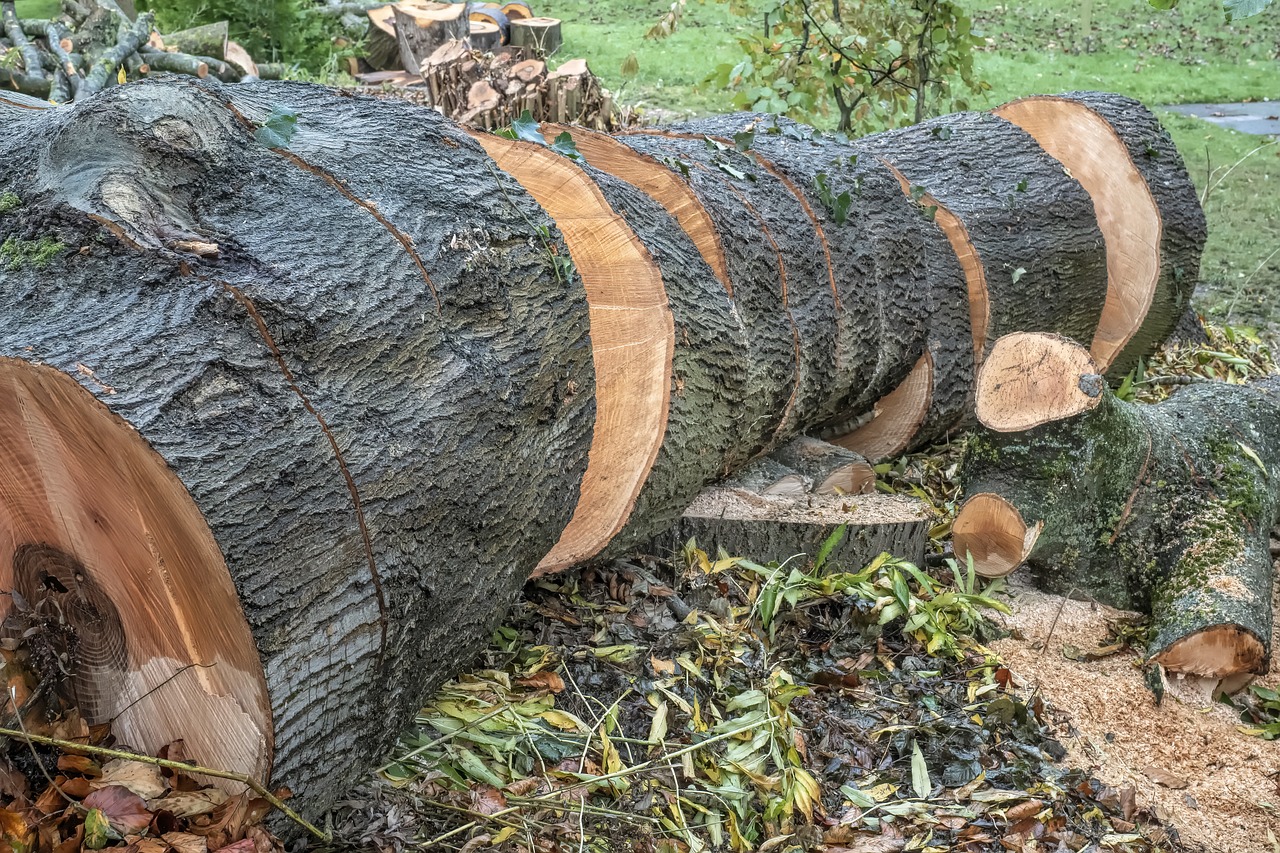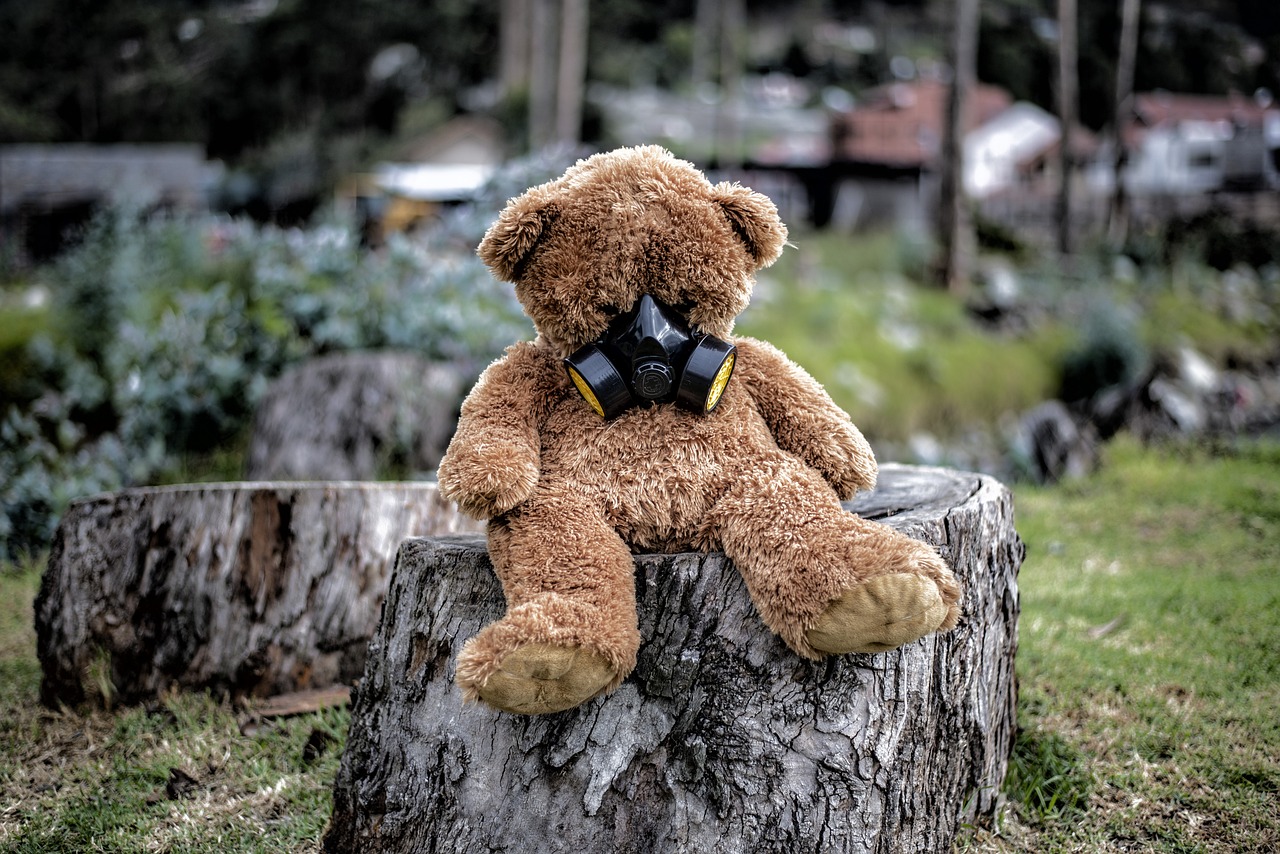The Link Between Deforestation and Pandemics
Deforestation is not just a matter of cutting down trees; it is a **global crisis** that has far-reaching consequences, including the emergence of pandemics. As we continue to encroach upon natural habitats, we inadvertently create conditions that allow diseases to leap from animals to humans. This connection between forest loss and health risks is a complex web of ecological, social, and health implications that we must unravel to understand the full scope of the problem.
When we think about deforestation, we often picture vast stretches of barren land, stripped of its greenery. But what we might not realize is that these actions disrupt entire ecosystems, leading to a decline in biodiversity. Biodiversity is crucial for maintaining balance within ecosystems, and its loss can create a breeding ground for pathogens. As habitats are destroyed, the delicate balance that keeps these ecosystems healthy is thrown into chaos. This sets the stage for **zoonotic diseases**, which are infections that jump from animals to humans, to flourish.
Imagine a world where humans and wildlife coexist in harmony, each playing a role in the ecosystem. Now, picture that harmony shattered as forests are cleared for agriculture or urban development. The animals that once roamed freely are forced into smaller areas, often leading to increased interactions with human populations. This scenario is not just a hypothetical; it is a **reality** in many parts of the world today. The more we invade these natural spaces, the higher the risk of diseases spilling over into human communities.
Moreover, the relationship between deforestation and pandemics is not just about wildlife encroaching on human spaces; it is also about **climate change**. As forests are cut down, carbon dioxide levels rise, contributing to global warming. This change in climate not only affects weather patterns but also the habitats of various species. In turn, these shifts can alter the behavior of disease vectors, such as mosquitoes, making it easier for diseases to spread. The interconnectedness of these factors highlights the urgency of addressing deforestation in our fight against pandemics.
In summary, the link between deforestation and pandemics is a multi-faceted issue that requires a comprehensive understanding of ecological systems, wildlife behavior, and human health. By recognizing the impact of our actions on the environment, we can take steps to mitigate these risks. It is essential to advocate for sustainable practices that protect our forests, not only for the sake of the environment but also for the health of our global community. After all, in a world where diseases can travel as fast as we can, protecting our natural habitats is not just an environmental issue; it is a **public health imperative**.
- What is deforestation? Deforestation refers to the large-scale removal of trees, leading to habitat destruction.
- How does deforestation contribute to pandemics? Deforestation leads to habitat loss, forcing wildlife into closer contact with humans and increasing the risk of zoonotic diseases.
- What are zoonotic diseases? Zoonotic diseases are infections that are transmitted from animals to humans, often emerging in areas where wildlife habitats are disturbed.
- How does climate change relate to deforestation? Deforestation contributes to climate change, which can alter weather patterns and affect the spread of diseases.
- What can be done to mitigate the risks associated with deforestation? Advocating for sustainable land-use practices and protecting natural habitats are essential steps in reducing the risk of pandemics.

Understanding Deforestation
Deforestation is more than just a buzzword; it’s a significant environmental crisis that involves the large-scale removal of trees from forested areas. Imagine a lush, vibrant forest teeming with life, suddenly reduced to barren land. This transformation not only disrupts the natural beauty of our planet but also leads to the destruction of vital habitats for countless species. The reasons behind deforestation are complex and multifaceted, driven primarily by human activities.
One of the leading causes of deforestation is agriculture. As the global population continues to grow, the demand for food increases, prompting farmers to clear vast expanses of forest to make way for crops and livestock. This practice not only destroys the trees but also alters the soil, making it less fertile over time. Similarly, logging—both legal and illegal—contributes significantly to forest loss. Timber is in high demand for construction, furniture, and paper products, leading to unsustainable logging practices that can devastate entire ecosystems.
Urban expansion is another culprit, as cities spread into previously untouched land. As more people flock to urban areas in search of better opportunities, forests are often sacrificed to accommodate housing, roads, and infrastructure. This encroachment not only leads to habitat destruction but also fragments ecosystems, making it difficult for wildlife to thrive. The impact of deforestation extends beyond the immediate loss of trees; it disrupts biodiversity, leading to a decline in various species that rely on forests for survival.
To illustrate the gravity of the situation, consider the following table that highlights the primary causes of deforestation and their corresponding impacts:
| Cause of Deforestation | Impact |
|---|---|
| Agriculture | Habitat destruction, soil degradation, increased carbon emissions |
| Logging | Loss of biodiversity, disruption of ecosystems, increased soil erosion |
| Urban Expansion | Fragmentation of habitats, increased human-wildlife conflict, loss of ecosystem services |
As we peel back the layers of deforestation, it becomes clear that its implications extend far beyond the immediate loss of trees. The destruction of forests leads to a domino effect on biodiversity, climate regulation, and even human health. Forests play a crucial role in maintaining ecological balance; they act as carbon sinks, absorbing carbon dioxide from the atmosphere and helping to mitigate climate change. When trees are removed, not only is carbon released back into the atmosphere, but the capacity for future carbon absorption is also diminished.
In conclusion, understanding deforestation requires a holistic view of its causes and consequences. It’s not just about cutting down trees; it’s about recognizing how these actions ripple through our ecosystems, affecting wildlife, climate, and ultimately, human health. As we face the challenges of a rapidly changing world, it’s imperative that we address the root causes of deforestation and seek sustainable solutions that protect our forests and the myriad of life they support.

Zoonotic Diseases Explained
Zoonotic diseases are fascinating yet frightening phenomena that remind us of the intricate web connecting humans, animals, and the environment. Simply put, these are infections that leap from animals to humans, often with devastating consequences. Think of it as a game of biological tag, where pathogens are the players that move from one host to another, sometimes with alarming speed. But how do these diseases emerge, and why should we care?
The emergence of zoonotic diseases is often tied to human activities that disrupt natural ecosystems. As we encroach on wildlife habitats—whether for agriculture, urban development, or logging—we create opportunities for diseases to spill over from animals to humans. This phenomenon is not just a theoretical concern; it has been the catalyst for numerous outbreaks throughout history, including the infamous Ebola virus and the more recent COVID-19 pandemic.
Wildlife plays a crucial role in the transmission of these diseases, acting as reservoirs for various pathogens. For example, bats are well-known carriers of coronaviruses, and their close proximity to human populations can lead to outbreaks. Additionally, rodents, birds, and primates can harbor diseases that may jump to humans under the right conditions. The World Health Organization has identified over 200 zoonotic diseases, ranging from the relatively mild, like hantavirus, to the extremely severe, such as rabies and West Nile virus.
Understanding these interactions is vital for several reasons. First, it helps us recognize the risk factors associated with zoonotic diseases, which can be exacerbated by environmental changes, such as deforestation. Second, it underscores the importance of wildlife conservation. By protecting natural habitats, we not only preserve biodiversity but also reduce the chances of disease spillover. In essence, maintaining a healthy ecosystem is akin to building a fortress against potential pandemics.
To grasp the full picture, let's consider a few key factors that contribute to the emergence of zoonotic diseases:
- Habitat Disruption: As forests are cleared, wildlife is forced into closer proximity with humans, increasing the chances of disease transmission.
- Wildlife Trade: The illegal and legal trade of wild animals can facilitate the spread of pathogens across regions.
- Climate Change: Altered weather patterns can shift the habitats of both wildlife and disease vectors, creating new opportunities for outbreaks.
In conclusion, understanding zoonotic diseases is not just an academic exercise; it has real-world implications for public health and environmental conservation. As we continue to face the consequences of our actions on the planet, it becomes increasingly clear that protecting our natural world is essential for safeguarding our health. The next time you hear about a new disease emerging from the animal kingdom, remember that our fates are intertwined, and the choices we make today can have repercussions for generations to come.

The Role of Wildlife in Disease Spread
Wildlife plays a critical role in the transmission of zoonotic diseases, acting as reservoirs for various pathogens that can spill over into human populations. When we think about wildlife, we often picture majestic animals roaming freely in their natural habitats. However, these animals are also home to numerous viruses, bacteria, and parasites that can wreak havoc on human health. For instance, bats and rodents are notorious carriers of diseases like Ebola and hantavirus, respectively. Their ability to travel long distances and adapt to various environments allows these pathogens to spread rapidly, especially in areas where deforestation is prevalent.
Deforestation disrupts the delicate balance of ecosystems, forcing wildlife to migrate closer to human settlements in search of food and shelter. This contact increases the chances of disease transmission. Imagine a forest that once served as a natural barrier between wildlife and human populations; as trees fall, that barrier diminishes, bringing these two worlds into closer proximity. The risk of spillover events—where pathogens jump from animals to humans—skyrockets in such scenarios.
Moreover, the removal of forests can lead to a decline in biodiversity, which can have profound implications for disease dynamics. A diverse ecosystem typically functions as a natural buffer against disease spread. When certain animal species are lost due to habitat destruction, the remaining species may become more susceptible to infection, or they may harbor pathogens that were previously kept in check. This phenomenon is known as the dilution effect, where a loss of biodiversity increases the likelihood of disease transmission. For example, in areas where rodents thrive due to habitat loss, the risk of diseases like leptospirosis can significantly increase.
To illustrate the connection between wildlife and disease spread, consider the following table that highlights some key zoonotic diseases and their wildlife hosts:
| Zoonotic Disease | Primary Wildlife Reservoir | Transmission Pathway |
|---|---|---|
| Ebola | Bats | Direct contact with bodily fluids |
| Hantavirus | Rodents | Inhalation of aerosolized droppings |
| Lyme Disease | Deer | Ticks as vectors from deer to humans |
| West Nile Virus | Birds | Mosquitoes as vectors from birds to humans |
Understanding the role of wildlife in disease transmission is not just an academic pursuit; it has real-world implications for public health. As we encroach on natural habitats, we must recognize that our actions have consequences. The more we disrupt these ecosystems, the more we put ourselves at risk. Thus, it is essential for policymakers, conservationists, and public health officials to collaborate and develop strategies that not only protect wildlife but also safeguard human health.
In conclusion, the intricate relationship between wildlife and disease spread serves as a stark reminder of the interconnectedness of our world. As we continue to navigate the challenges posed by deforestation and habitat loss, we must remain vigilant and proactive in preventing future pandemics. By fostering a deeper understanding of these dynamics, we can take steps towards a healthier planet for both humans and wildlife.
- What are zoonotic diseases? Zoonotic diseases are infections that are transmitted from animals to humans. They can be caused by viruses, bacteria, parasites, and fungi.
- How does deforestation contribute to the spread of diseases? Deforestation forces wildlife into closer contact with humans, increasing the likelihood of disease spillover and disrupting ecosystems that naturally control disease vectors.
- What can be done to mitigate the risks associated with wildlife and disease spread? Implementing conservation strategies, protecting natural habitats, and promoting biodiversity can help reduce the risk of zoonotic disease transmission.

Habitat Loss and Wildlife Behavior
As forests are felled and habitats are destroyed, wildlife faces a dramatic shift in their living conditions. Imagine being uprooted from your home, forced to navigate a world that has suddenly become foreign and hostile. This is the reality for countless animal species as habitat loss pushes them into closer contact with human populations. The consequences of this encroachment can be dire, not only for the animals but also for us humans.
When animals lose their natural habitats, they often adapt in ways that can increase the risk of disease transmission. For instance, many species may start to venture into urban areas in search of food and shelter. This behavioral change can lead to a higher likelihood of disease spillover, where pathogens jump from animals to humans. A classic example is the case of bats, which are known carriers of various viruses. As their habitats shrink, they may roost closer to human settlements, increasing the chances of zoonotic diseases spreading.
The changes in wildlife behavior due to habitat loss can be categorized into several key adaptations:
- Increased Foraging in Urban Areas: Animals may begin to scavenge for food in human-populated areas, leading to more frequent interactions.
- Altered Migration Patterns: Species that rely on specific migratory routes may be forced to change their paths, potentially bringing them into contact with new hosts and pathogens.
- Stress and Aggression: The stress of losing their habitat can lead to aggressive behavior, making animals more likely to confront humans.
Moreover, habitat loss doesn't just affect individual species; it disrupts the entire ecosystem. As certain animals become more prevalent in urban settings, they can outcompete local wildlife for resources, leading to a decline in biodiversity. This loss of biodiversity can create a vacuum that allows opportunistic pathogens to thrive. The more diverse an ecosystem, the more resilient it is to diseases. When that diversity is compromised, the balance is thrown off, and pathogens find new opportunities to spread.
In summary, the relationship between habitat loss and wildlife behavior is a complex web of interactions that can have profound implications for human health. As wildlife is forced into closer quarters with humans, the chances of zoonotic diseases spilling over into human populations increase. Understanding these dynamics is crucial for developing effective strategies to mitigate the risks associated with deforestation and habitat destruction.
- What is habitat loss? Habitat loss refers to the destruction or alteration of natural environments, primarily due to human activities like deforestation, urbanization, and agriculture.
- How does habitat loss affect wildlife behavior? Habitat loss can force wildlife to adapt their behavior, often leading them to encroach on human spaces, which increases the risk of disease transmission.
- What are zoonotic diseases? Zoonotic diseases are infections that can be transmitted from animals to humans, often facilitated by close contact or environmental changes.
- Why is biodiversity important for health? Biodiversity contributes to ecosystem resilience; a diverse ecosystem can prevent the spread of diseases by maintaining balance among species.

Human Encroachment on Natural Habitats
As our world continues to evolve, the relentless march of urbanization and the expansion of agriculture have led to a significant encroachment on natural habitats. This phenomenon isn’t just a minor inconvenience for wildlife; it’s a game-changer that drastically alters the delicate balance of ecosystems. Think of it as a crowded party where everyone is stepping on each other's toes—when humans invade these natural spaces, animals are forced into closer quarters, leading to a myriad of consequences.
When we convert forests into farmland or build sprawling cities, we disrupt the homes of countless species. This disruption doesn’t just push animals out; it also brings them into direct contact with human populations. Imagine a family of deer that once roamed freely in a lush forest now finding themselves in a suburban backyard, searching for food among gardens and trash cans. This proximity increases the chances of disease transmission between wildlife and humans, as animals may carry pathogens that can spill over into our population.
Moreover, the loss of natural habitats forces wildlife to adapt in ways that can be detrimental to both their health and ours. For instance, as animals are pushed into smaller areas, they may become more aggressive, desperate for resources. This change in behavior can lead to increased encounters with humans, which raises the risk of zoonotic diseases—those nasty infections that jump from animals to us. Some of the most notorious diseases, such as COVID-19 and Ebola, have roots in wildlife, and their emergence can often be traced back to human encroachment on natural habitats.
In addition to direct contact, habitat loss can also affect the ecosystem dynamics. When certain species are driven out, it can lead to an imbalance, allowing other species—often those that are disease carriers—to thrive unchecked. This is akin to removing a few key players from a sports team; the remaining players may not perform as well, and the whole game can change dramatically. For example, the decline of predators can lead to an overpopulation of smaller mammals, which in turn can increase the spread of ticks and the diseases they carry.
To truly understand the impact of human encroachment on natural habitats, we must recognize its broader implications. It’s not just about losing trees or wildlife; it’s about the health of our planet and ourselves. By altering these ecosystems, we are playing a dangerous game that can lead to unforeseen health crises. As we forge ahead, it’s crucial to consider sustainable practices that not only protect wildlife but also safeguard our own health. The question remains: how can we strike a balance between development and conservation to ensure a healthier future for all?
- What are the main causes of deforestation?
Deforestation is primarily caused by agriculture, logging, and urban expansion. - How do zoonotic diseases spread from animals to humans?
Zoonotic diseases can spread through direct contact with infected animals, bites from disease-carrying vectors, or consuming contaminated food or water. - What can be done to mitigate the impacts of human encroachment?
Implementing sustainable land-use practices, protecting natural habitats, and raising awareness about wildlife conservation can help mitigate these impacts. - Why is biodiversity important for human health?
Biodiversity contributes to ecosystem stability, which helps regulate diseases and provides resources for medicine and food.

Deforestation’s Impact on Ecosystems
Deforestation is not just about cutting down trees; it triggers a cascade of ecological consequences that ripple through entire ecosystems. When forests are cleared, the intricate web of life that thrives within these habitats is disrupted, leading to a dramatic loss of biodiversity. Imagine a bustling city suddenly losing its population; the silence that follows is akin to what happens in a deforested area. Species that once flourished in their natural environment find themselves without homes, food sources, or the necessary conditions to survive.
One of the most alarming outcomes of deforestation is the alteration of natural habitats, which can lead to the extinction of numerous species. As trees are felled, the unique microclimates that support various plants and animals are destroyed. For instance, tropical rainforests, which are home to over half of the world's plant and animal species, are being decimated at an alarming rate. The loss of these habitats not only threatens the flora and fauna that reside there but also disrupts the ecosystem services they provide, such as carbon storage, water purification, and soil stabilization.
Furthermore, the removal of trees and vegetation can lead to soil degradation. Without the protective cover of trees, soil becomes susceptible to erosion. This erosion not only diminishes the land's fertility but also leads to sedimentation in nearby water bodies, which can harm aquatic life. The interconnectedness of ecosystems means that the decline of one species can have a domino effect, leading to the decline of others. For example, when pollinators like bees and butterflies lose their habitats, the plants that rely on them for reproduction also suffer, further destabilizing the ecosystem.
Additionally, deforestation contributes to altered disease dynamics. As wildlife habitats are destroyed, animals are pushed into closer proximity with human populations. This increased interaction can lead to the spillover of zoonotic diseases, as pathogens that were once confined to wildlife find new hosts in humans. The rise of diseases like Ebola and COVID-19 can be traced back to such interactions, highlighting the urgent need to recognize the impact of deforestation on public health.
In summary, the impact of deforestation on ecosystems is profound and multifaceted. The loss of biodiversity, the degradation of soil, and the alteration of disease dynamics all stem from the simple act of removing trees. To truly understand the gravity of deforestation, we must consider not just the immediate benefits of land clearing but the long-term consequences that threaten our planet's health and our own survival.
- What are the primary causes of deforestation? The main causes include agricultural expansion, logging, urbanization, and infrastructure development.
- How does deforestation affect climate change? Deforestation contributes to increased carbon emissions, which exacerbate climate change by reducing the number of trees that can absorb carbon dioxide.
- Can reforestation help mitigate the effects of deforestation? Yes, reforestation can restore habitats, improve biodiversity, and help sequester carbon, thus mitigating some impacts of deforestation.
- What can individuals do to combat deforestation? Individuals can support sustainable products, participate in tree-planting initiatives, and advocate for policies that protect forests.

Climate Change and Health Risks
Climate change is not just a distant threat; it’s a reality that is reshaping our planet and, in turn, our health. As the climate warms, the intricate balance of ecosystems is disrupted, leading to a cascade of effects that can significantly heighten health risks. One of the most alarming aspects of this phenomenon is its relationship with deforestation. When forests are cleared, the natural barriers that once protected us from various pathogens and diseases begin to erode. With fewer trees to absorb carbon dioxide and regulate temperatures, we find ourselves in a precarious situation where the likelihood of pandemics increases.
But how exactly does climate change intertwine with health risks? To understand this, we need to consider the role of changing weather patterns. For instance, rising temperatures can expand the habitats of disease vectors like mosquitoes and ticks, which are responsible for spreading illnesses such as malaria and Lyme disease. As these vectors migrate to new regions, they bring along the pathogens they carry, exposing previously unexposed populations to new diseases.
Moreover, extreme weather events—such as floods and droughts—are becoming more common due to climate change. These events can lead to water contamination, creating breeding grounds for waterborne diseases. For instance, flooding can overwhelm sewage systems, leading to outbreaks of cholera and other gastrointestinal diseases. The ripple effects of these changes can be devastating, especially in vulnerable communities that lack adequate healthcare resources.
Additionally, the interplay between deforestation and climate change creates a feedback loop that exacerbates health risks. As forests are destroyed, not only do we lose biodiversity, but we also diminish the ecosystem services that help regulate disease. For example, a rich variety of plants and animals can help keep disease vectors in check. When these species disappear, the balance is disrupted, leading to an increase in disease-carrying organisms. This is particularly concerning in tropical regions, where biodiversity is already under threat.
To visualize the interconnectedness of deforestation, climate change, and health risks, consider the following table:
| Factor | Impact on Health |
|---|---|
| Deforestation | Increases human-wildlife interactions, raising the risk of zoonotic diseases |
| Climate Change | Expands habitats for disease vectors, increases extreme weather events |
| Biodiversity Loss | Reduces natural disease regulation, increases pathogen spread |
In summary, the relationship between climate change and health risks is complex and multifaceted. As we continue to witness the effects of deforestation and climate change, it becomes increasingly clear that we need to adopt integrated approaches to health and environmental policies. Only by understanding these connections can we hope to mitigate the risks associated with pandemics and protect both human and ecological health.
- How does deforestation contribute to the spread of zoonotic diseases?
Deforestation disrupts natural habitats, forcing wildlife into closer contact with humans, which increases the likelihood of disease transmission. - What role does climate change play in the emergence of new diseases?
Climate change alters weather patterns, expanding the habitats of disease vectors and creating favorable conditions for pathogens to thrive. - Why is biodiversity important for health?
Biodiversity helps regulate ecosystems and can limit the spread of diseases by maintaining natural checks on disease-carrying organisms.

Changing Weather Patterns
As we dive into the intricate relationship between deforestation and the emergence of pandemics, one cannot overlook the profound impact of . Climate change, driven largely by human activities, is altering the delicate balance of our ecosystems, and this disruption has far-reaching consequences for both wildlife and human health. Imagine a world where the seasons no longer follow their traditional rhythms; this is the reality we are facing as temperatures rise and precipitation patterns shift.
With deforestation contributing to climate change, we are witnessing a vicious cycle where the loss of trees not only exacerbates global warming but also creates conditions that favor the spread of zoonotic diseases. For instance, rising temperatures can expand the habitats of disease-carrying vectors, such as mosquitoes and ticks, allowing them to thrive in regions previously inhospitable to them. This means that diseases like malaria and Lyme disease are likely to spread to new areas, putting more people at risk.
Furthermore, the alteration of rainfall patterns can lead to increased flooding or prolonged droughts, both of which can have significant implications for public health. Flooding can create stagnant water pools, which serve as breeding grounds for mosquitoes, while droughts can stress wildlife populations, pushing them closer to human settlements in search of food and water. This closer proximity increases the chances of disease spillover, as animals that carry pathogens come into contact with humans more frequently.
To illustrate the impact of changing weather patterns on disease transmission, consider the following table:
| Weather Change | Impact on Disease Vectors | Example Diseases |
|---|---|---|
| Increased Temperature | Extended breeding seasons | Malaria, Dengue Fever |
| Altered Rainfall | Stagnant water pools | West Nile Virus, Zika Virus |
| Extreme Weather Events | Displacement of wildlife | Hantavirus, Ebola |
As we can see, the interplay between climate change and deforestation creates a perfect storm for the emergence of new diseases. It is crucial to recognize that the health of our planet is intricately linked to our own health. By addressing deforestation and implementing sustainable practices, we can not only combat climate change but also reduce the risk of pandemics. So, what can we do? It starts with awareness and action—supporting reforestation efforts, advocating for sustainable land use, and pushing for policies that prioritize the health of our ecosystems.
- How does deforestation contribute to climate change? Deforestation releases stored carbon dioxide into the atmosphere, increasing greenhouse gas concentrations and accelerating global warming.
- What are zoonotic diseases? Zoonotic diseases are infections that are transmitted from animals to humans, often as a result of increased human-wildlife interaction.
- Can changing weather patterns affect human health? Yes, changing weather patterns can influence the spread of diseases by altering the habitats of disease vectors and increasing the likelihood of human exposure to pathogens.

Global Health Implications
As we delve deeper into the intricate relationship between deforestation and pandemics, it becomes increasingly clear that the implications for global health are profound. The loss of forests is not just an environmental concern; it is a pressing health issue that demands our attention. When we strip away the trees, we are not only erasing habitats but also creating conditions ripe for the emergence of new diseases. This connection is not merely coincidental; it is a complex web of interactions that can have devastating effects on human populations.
The consequences of deforestation extend beyond the immediate loss of biodiversity. As wildlife habitats shrink, animals are forced into closer proximity with human settlements. This increased interaction becomes a breeding ground for zoonotic diseases, those nasty infections that jump from animals to humans. Think about it: when a forest is cut down, it’s like opening a door for pathogens to walk right into our communities. The more we encroach on these natural habitats, the more we invite potential outbreaks.
Moreover, the health implications are not confined to the regions directly affected by deforestation. The ripple effects can be felt globally. For instance, the emergence of diseases like Ebola and COVID-19 has been linked to changes in land use and wildlife exploitation. As the world becomes more interconnected, a disease that starts in a remote forest can quickly escalate into a global pandemic, affecting millions. This is why we must consider the integrated approaches to health and environmental policies, recognizing that our health is inextricably linked to the health of our planet.
To better understand the global health implications of deforestation, consider the following table that outlines key connections:
| Aspect | Implication |
|---|---|
| Wildlife Encroachment | Increased human-animal interactions lead to higher disease transmission rates. |
| Biodiversity Loss | Reduction in species diversity can destabilize ecosystems, making them more susceptible to pathogens. |
| Climate Change | Deforestation contributes to climate change, which in turn affects disease patterns and vectors. |
| Global Trade | Increased movement of goods and people can facilitate the spread of diseases originating from deforested areas. |
Furthermore, it is essential to recognize that addressing these health implications requires a multifaceted approach. Governments, NGOs, and local communities must collaborate to implement sustainable practices that protect forests while promoting public health. This could include reforestation efforts, stricter regulations on land use, and public education campaigns about the importance of biodiversity.
In conclusion, the link between deforestation and global health is undeniable. As we continue to face the challenges of emerging diseases, it is crucial to adopt a holistic perspective that encompasses both environmental and health policies. By doing so, we can work towards a healthier planet and, ultimately, a healthier humanity.
- What are zoonotic diseases? Zoonotic diseases are infections that are transmitted from animals to humans, often as a result of close contact or habitat encroachment.
- How does deforestation contribute to pandemics? Deforestation disrupts ecosystems, forcing wildlife into closer contact with humans, which increases the likelihood of disease transmission.
- What can be done to mitigate the health impacts of deforestation? Implementing sustainable land-use practices, protecting existing forests, and promoting reforestation are crucial steps in mitigating these impacts.
- Why is it important to address the link between health and the environment? The health of our planet and the health of human populations are interconnected; addressing environmental issues can lead to better health outcomes.
Frequently Asked Questions
- What is deforestation?
Deforestation is the large-scale removal of trees from forested areas, which leads to habitat destruction and a significant loss of biodiversity. It occurs due to various factors, including agriculture, logging, and urban expansion.
- How does deforestation contribute to pandemics?
Deforestation increases human-wildlife interactions by forcing animals into closer contact with human populations. This proximity can facilitate the transmission of zoonotic diseases, which are infections that jump from animals to humans.
- What are zoonotic diseases?
Zoonotic diseases are infections that are transmitted from animals to humans. They can emerge from wildlife populations and are often exacerbated by habitat loss and environmental changes caused by deforestation.
- Can you give examples of zoonotic diseases linked to deforestation?
Yes! Diseases like Ebola, Zika, and certain strains of influenza have been linked to deforestation. When forests are cleared, wildlife that carries these pathogens can come into closer contact with humans, increasing the risk of outbreak.
- How does habitat loss affect wildlife behavior?
As habitats are destroyed, wildlife may change their behaviors, often venturing into urban areas or agricultural lands in search of food and shelter. This change can heighten the chances of disease spillover to humans.
- What role does climate change play in this issue?
Climate change exacerbates the effects of deforestation by altering weather patterns, which can affect the distribution and behavior of disease vectors, such as mosquitoes. This can lead to an increase in the spread of zoonotic diseases.
- How can we mitigate the risks associated with deforestation and pandemics?
Mitigating these risks requires integrated approaches that combine health and environmental policies. Strategies may include reforestation, protecting natural habitats, and promoting sustainable land use practices.
- What can individuals do to help combat deforestation?
Individuals can contribute by reducing their consumption of products linked to deforestation, supporting sustainable brands, and advocating for policies that prioritize forest conservation and restoration.



















